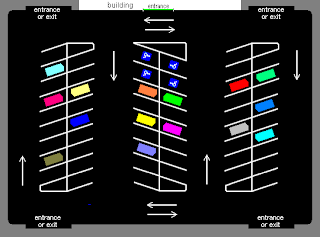Does fitness matter? I know some people who think the whole notion of fitness is just a waste of time. Their attitude is, "Well, I'm going to die anyway, so I might as well enjoy myself." This, in their mind, gives them license to just do whatever they want. What they don't know, until I mention it, and I'm careful about dropping such a bomb especially at a party, is that the average person will spend the last ten years of his or her life in ill health and most of the diseases, injuries, and surgeries are preventable. And, adults who are physically active in their 50s and early 60s are 35 percent less likely to die in the next eight years than those who are sedentary.
But, the question is still on the table. What does it mean to be fit?
Being fit is not the same thing as being healthy. You can be healthy with low fitness. For example, you may have well controlled blood pressure, cholesterol, body fat, be free from any known diseases but not be able to jog five miles. The ability to jog requires a greater degree of physical adaptation than day to day activity. Fitness is the state of being suitably adapted to the demands of an environment. The more demanding the environment, the greater degree of fitness required.
I think of fitness existing across a spectrum from Sedentary to Sport level physical demands. Where people run into trouble, and usually around this time of year, is trying to perform in a more demanding environment with insufficient fitness. There's a mismatch between the person's physical ability and the task. If you look at the graphic, an example of this mismatch is a person with Sedentary level fitness trying to exercise at a Recreational level (e.g. starting a jogging and exercise routine, Recreational Fitness, when you haven't jogged or exercised in many years, Sedentary Fitness). This is how people get hurt and why many people quit their exercise routines.
run into trouble, and usually around this time of year, is trying to perform in a more demanding environment with insufficient fitness. There's a mismatch between the person's physical ability and the task. If you look at the graphic, an example of this mismatch is a person with Sedentary level fitness trying to exercise at a Recreational level (e.g. starting a jogging and exercise routine, Recreational Fitness, when you haven't jogged or exercised in many years, Sedentary Fitness). This is how people get hurt and why many people quit their exercise routines.
There are a number of factors which effect your fitness or state of being suitably adapted to an environment: nutrition, strength, flexibility, cardiovascular capability, coordination, balance, mental and emotional capacity. To raise your fitness level, you need proper nutritional support, physically train slightly above your current ability and live below it, and work just as hard on expanding your mental and emotional capacity. If your training is too far above or below, your body is unable to adapt and the result is you will actually become weaker over time (this phenomenon is also known as "over-training").
To really get the most out of life, to really engage with the world, you need a certain amount of fitness. Your challenge is to figure out what you need. How fit do you need to be? How fit do you want to be?
Doug Kelsey



































